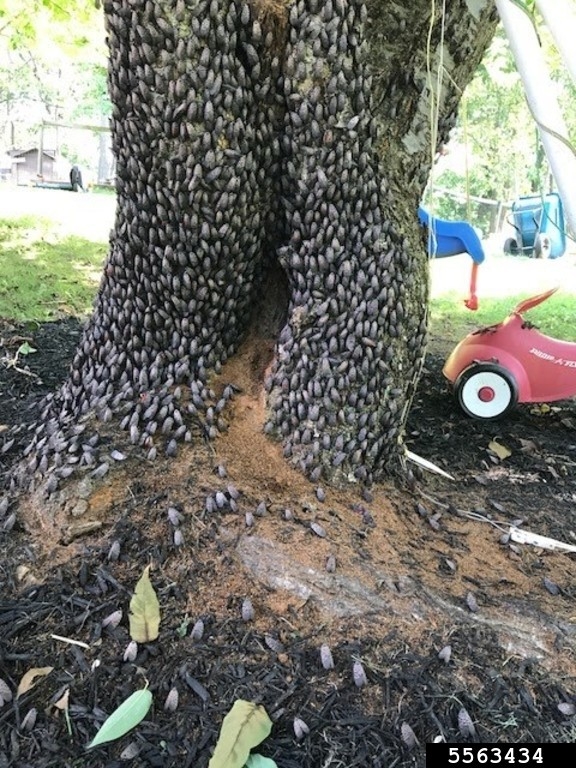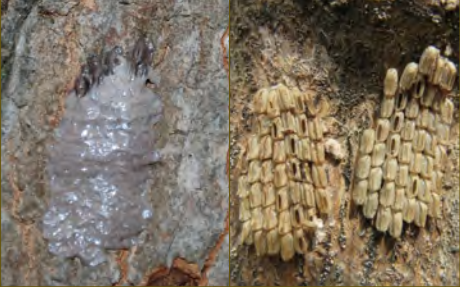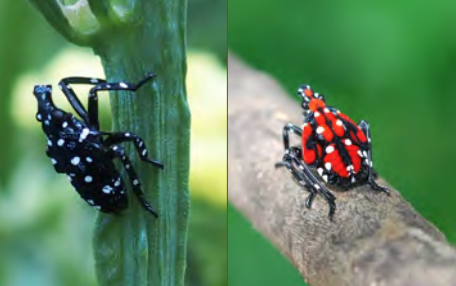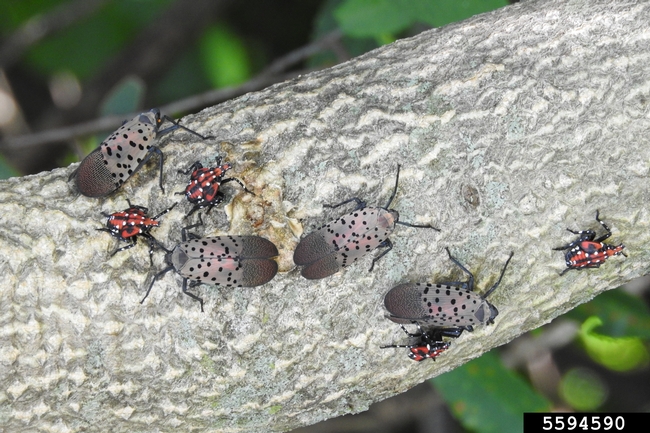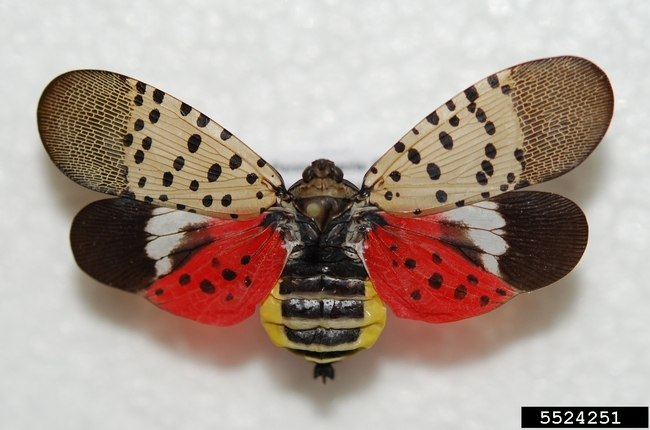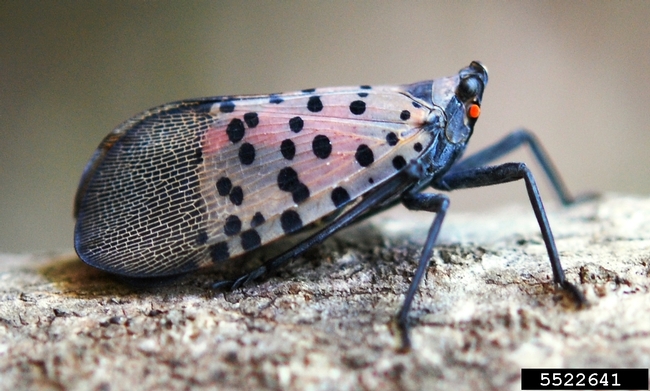The spotted lanternfly (Lycorma delicatula) is a new exotic pest that was first detected in Pennsylvania in 2014 and has since moved to other nearby states (Figure 1). Everyone, including home gardeners and retail nursery and garden center employees, can play a significant role in keeping this exotic pest out of California by being the eyes and ears needed for early detection.
Figure 3. Aggregation of adult spotted lanternflies.
Each female produces one to two egg masses of 30 to 50 eggs each. Seedlike eggs are laid in multiple successive rows and covered with a yellowish-brown waxy deposit (Figure 4). The first three immature stages are black with white spots and lack wings. The fourth immature stage is red and black with white spots and have small wing pads (Figure 5).
Adults have a stout yellow abdomen with incomplete black bands and two sets of wings: the forewings and the hindwings. The forewings are a beige-cream color with black spots changing to small black rectangles toward the tips. The hindwings are primarily black and red, with black spots appearing in the red portions. The hindwings are not noticeable when at rest (Figure 6). Adults tend to hop when moving instead of flying.
The spotted lanternfly can negatively affect high value commodity crops in California if it were to become established. In a proactive response to this possibility, researchers at UC Berkeley and UC Riverside are testing biological control agents for this insect.
Figure 6. The fourth immature stage and adults of the spotted lanternfly.
[Original article published in the Summer 2020 issue of the Retail Newsletter]
